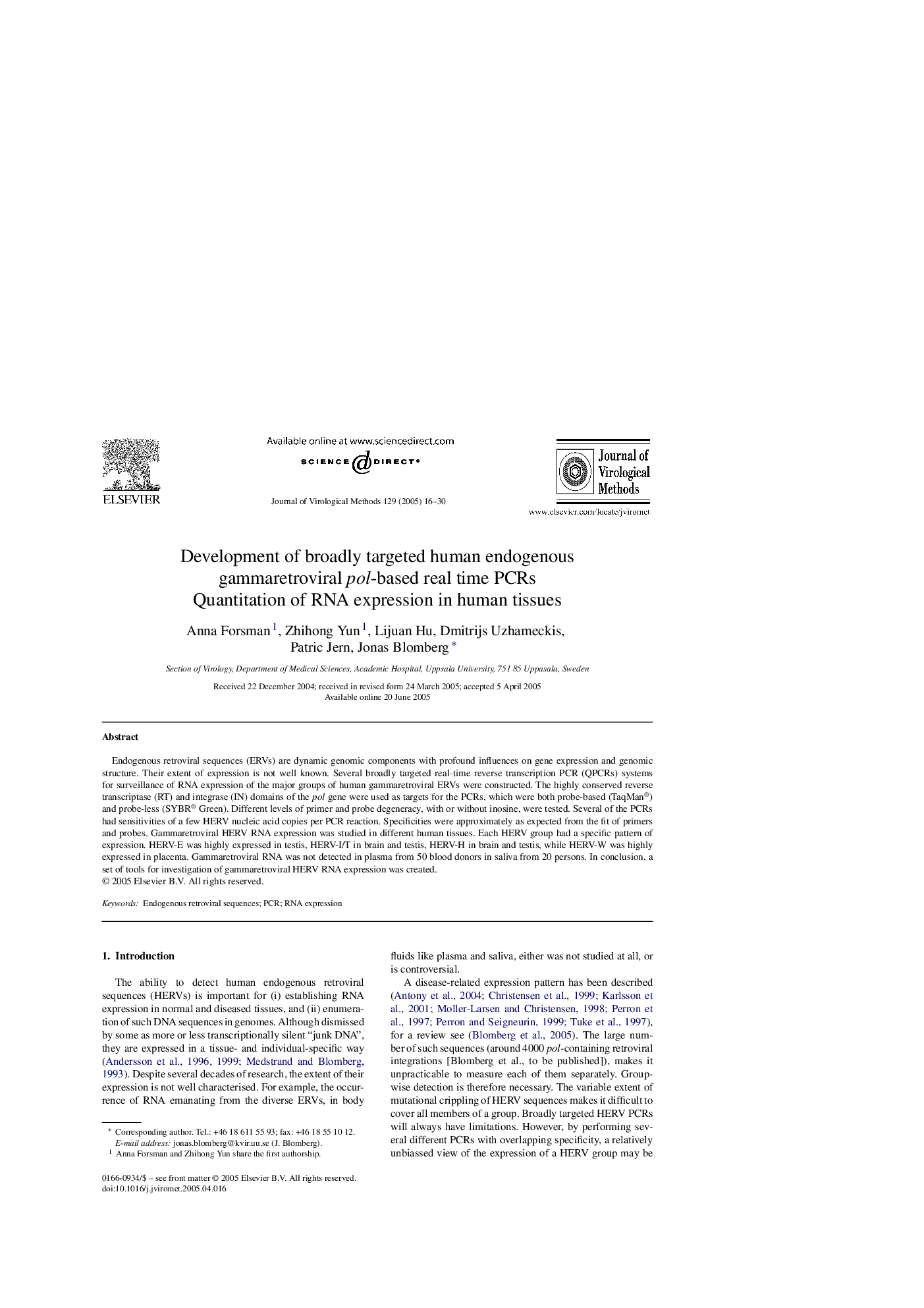| Article ID | Journal | Published Year | Pages | File Type |
|---|---|---|---|---|
| 9279477 | Journal of Virological Methods | 2005 | 15 Pages |
Abstract
Endogenous retroviral sequences (ERVs) are dynamic genomic components with profound influences on gene expression and genomic structure. Their extent of expression is not well known. Several broadly targeted real-time reverse transcription PCR (QPCRs) systems for surveillance of RNA expression of the major groups of human gammaretroviral ERVs were constructed. The highly conserved reverse transcriptase (RT) and integrase (IN) domains of the pol gene were used as targets for the PCRs, which were both probe-based (TaqMan®) and probe-less (SYBR® Green). Different levels of primer and probe degeneracy, with or without inosine, were tested. Several of the PCRs had sensitivities of a few HERV nucleic acid copies per PCR reaction. Specificities were approximately as expected from the fit of primers and probes. Gammaretroviral HERV RNA expression was studied in different human tissues. Each HERV group had a specific pattern of expression. HERV-E was highly expressed in testis, HERV-I/T in brain and testis, HERV-H in brain and testis, while HERV-W was highly expressed in placenta. Gammaretroviral RNA was not detected in plasma from 50 blood donors in saliva from 20 persons. In conclusion, a set of tools for investigation of gammaretroviral HERV RNA expression was created.
Keywords
Related Topics
Life Sciences
Immunology and Microbiology
Virology
Authors
Anna Forsman, Zhihong Yun, Lijuan Hu, Dmitrijs Uzhameckis, Patric Jern, Jonas Blomberg,
